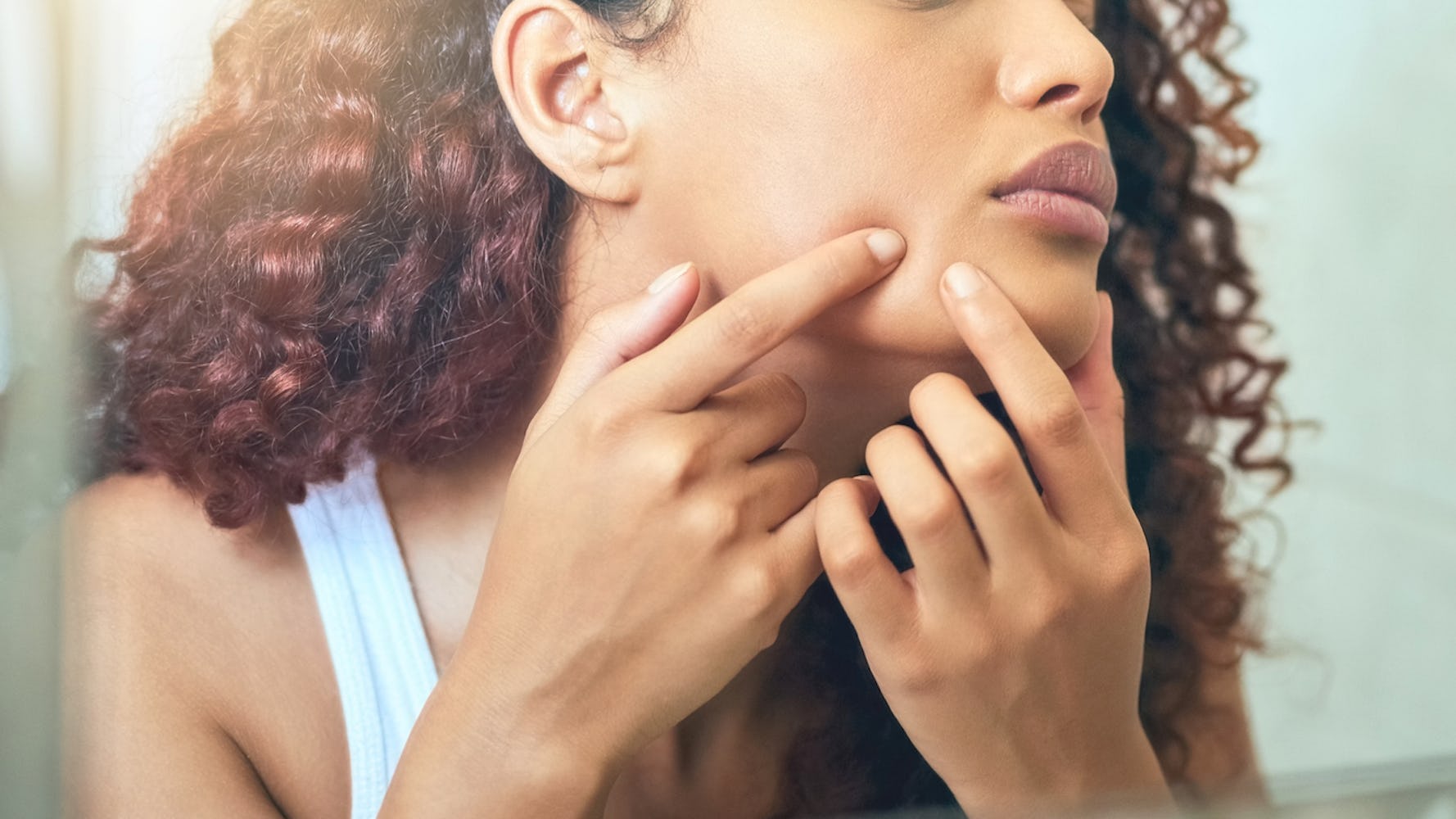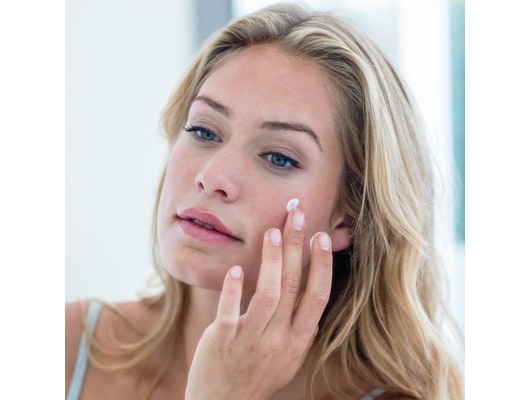So You’ve Picked Your Skin: This Is What To Do Next
Thespotlyte | July 25, 23

Of all the not-so-great things you can do to your skin (like skipping sunscreen and falling asleep with a full face of makeup), picking at your skin is one of the worst. Poking at your complexion — and the subsequent inflammation — can open a Pandora’s box of problems.
There are a lot of factors behind the urge to pick. “People may pick because they feel a rash, growth, or breakout is unsightly and they feel they can make it look better — which picking never does,” says Shari Marchbein, MD, a dermatologist in New York, NY. Itchiness can also lead to picking — she notes that some of her patients have tried to pick off their skin cancer — as can psychological factors, like anxiety and obsessive-compulsive disorder.
As appealing as it might be, picking only makes matters worse. “When you pick at your skin, you damage the skin barrier function by creating an opening in the skin through which bacteria can enter, which can worsen inflammation and possibly cause infection,” explains Jennifer Chwalek, MD, a dermatologist at Union Square Laser DermatologyTM in New York City. “Picking the skin also causes the capillaries in the skin to dilate, creating more redness, swelling, and inflammation.” Depending on how aggressive you are, picking can even cause broken blood vessels and scarring, both of which may be permanent.
The best way to avoid all of the above is, of course, by resisting the temptation. That’s easier said than done, we know. But if you do give in to the siren call of an impending zit, not all hope is lost. When you’re dealing with the red, swollen aftermath of a picking session, here’s how to rehab it and, ideally, prevent it from happening again.
How To Treat It ASAP
Once you’ve picked, skin needs extra TLC. If you can see that you’ve left an open wound, apply either a bland emollient, such as Aquaphor® ($7), or a topical antibiotic, like Neosporin® ($7). “If it is a pimple or acne cyst that you picked, then apply a combination of benzoyl peroxide and an antibiotic, which you can get from your dermatologist,” advises Chwalek.
[Editor’s note: As always, talk to your doctor before starting any new treatment.]
In Kate Somerville® Anti BacTM Acne Clearing Lotion ($42), which contains five percent benzoyl peroxide, that notoriously drying active ingredient is offset with moisturizing argan extract. Meanwhile, the antibiotic that your dermatologist prescribed can keep infections from working their way into skin, where they can cause even bigger problems. Chwalek also suggests using only gentle cleansers to cleanse and soothe the area without exacerbating irritation. Try La Roche-Posay® Toleriane® Hydrating Gentle Cleanser ($15), which is packed with nourishing ceramides.
Furthermore, if you typically count on a toner, peel pad, or retinol product to exfoliate and boost skin’s radiance, give it the night off. “You should avoid products that contain alpha hydroxy acids and retinoids, as these may create more irritation on open skin,” says Chwalek. And, instead of using your heavy-duty serums and moisturizers, opt for a moisturizer with fewer frills. We like the comforting Kiehl’s Since 1851® Ultra Facial Cream ($30) which contains squalane to keep skin hydrated. Fragrances, active ingredients, and powerful complexes run a higher chance of causing a contact reaction from an allergy or irritation when they’re applied to open skin.
[Editor’s note: Retinol shouldn’t be used by those who are pregnant, considering getting pregnant, or nursing. Please consult with your doctor before use.]

How To Treat It Once It Heals
As with any sort of inflammation, picking can lead to post-inflammatory hyperpigmentation (or PIH), particularly if you’re already prone to dark spots. “Excellent sun protection with SPF 30+ applied every two hours is especially important, as these areas of hyperpigmentation will get even darker with any sun exposure; even walking outside or sitting by a window,” says Marchbein. We like CeraVe® Hydrating Sunscreen Broad Spectrum SPF 50 ($16), which contains nourishing ceramides and niacinamide to help moisturize and brighten up dark marks.
She’s also a fan of ingredients that brighten and even out skin tone, such as hydroquinone, kojic acid, azelaic acid, and vitamin C, and — only once skin has healed — retinol. Try Dr. Dennis Gross® Skincare Clinical Grade IPL Dark Spot Correcting Serum ($92), which targets dark spots with a combination of vitamin C and kojic acid. PIH usually fades over time, but if it’s severe, chemical peels and lasers may be able to help. If that’s not reason enough to slather on SPF, we don’t know what is.
How To Prevent It From Happening Again
The best solution to picking is to just not do it, since it will only make the situation worse. Take a breakout, for instance. If you hate how a blemish looks before you mess with it, you’ll be really disappointed by its appearance once you’ve picked. “Acne, in and of itself, is inflammation under the skin,” Marchbein explains. “When you pop a zit, you are adding insult to injury — causing more inflammation, redness, and swelling than what would have been there in the first place.”
And whether you do it when you’re stressed or just tend to pick absentmindedly, it can easily turn into a habit. Once that happens, it can be a tough one to break. One way around this is to address the source of the picking. If you think yours is psychologically-driven, you can consider working with a therapist. However, there’s an easy, low-budget method you can try first that Chwalek recommends: Put adhesive bandages on your “picking” fingers. Even if it doesn’t help you stop, it’ll at least make you aware of when and why you may be doing it.
If you have managed to stop picking, you don’t have to live with whatever caused your breakout in the first place. “If you have a painful pimple, apply a warm compress followed by a topical treatment, like benzoyl peroxide, or a topical antibiotic,” says Chwalek. For pimples that are particularly inflamed or painful, you can visit your dermatologist, who may decide to inject it with cortisone. That zaps inflammation on the spot, which should help your pimple resolve faster — and, ideally, before you get a chance to pick at it. However, keep in mind that this treatment is a steroid hormone and should not be taken lightly. Your dermatologist can determine whether or not it’s an option for you.
Similarly, if a recurrent skin condition is making your fingers twitch, a dermatologist can identify, diagnose, and treat the source of your picking. And, “If you have a new or changing spot, go see your dermatologist immediately so that it can be examined,” says Marchbein. It makes sense: You won’t be tempted to pick if there’s nothing to pick at in the first place.
Product prices may vary from the time this article was written.
Allergan® may receive commissions for purchases made through links in this article.






